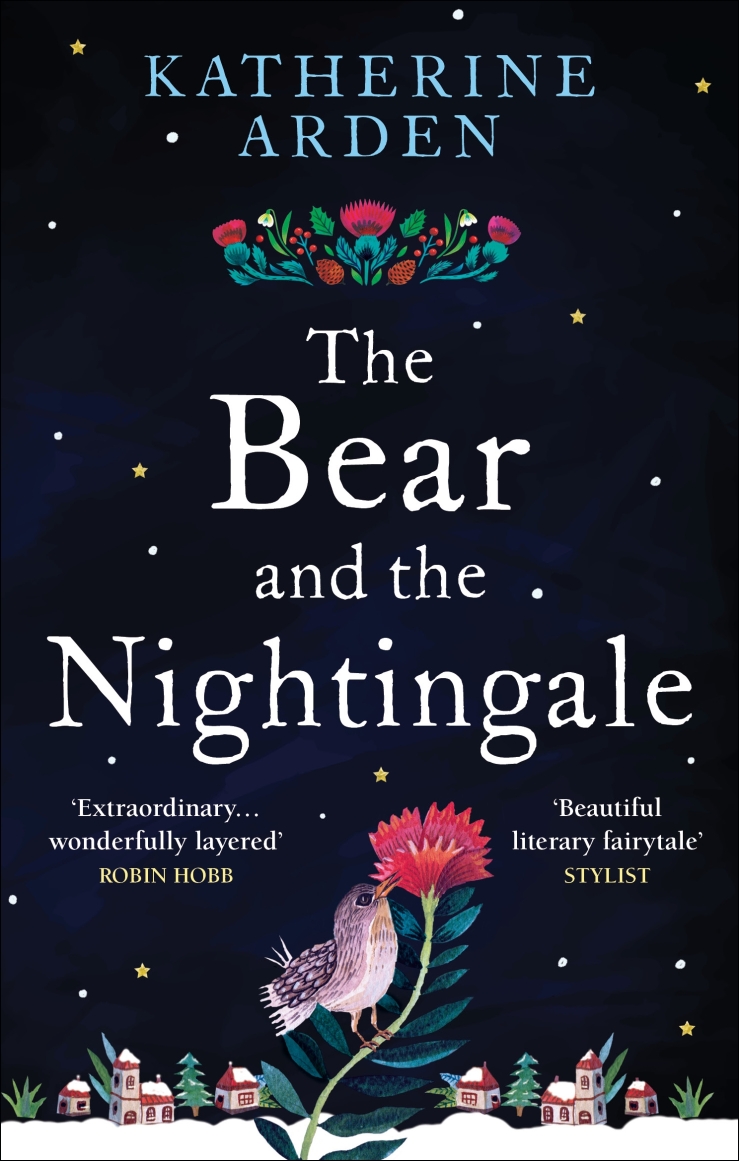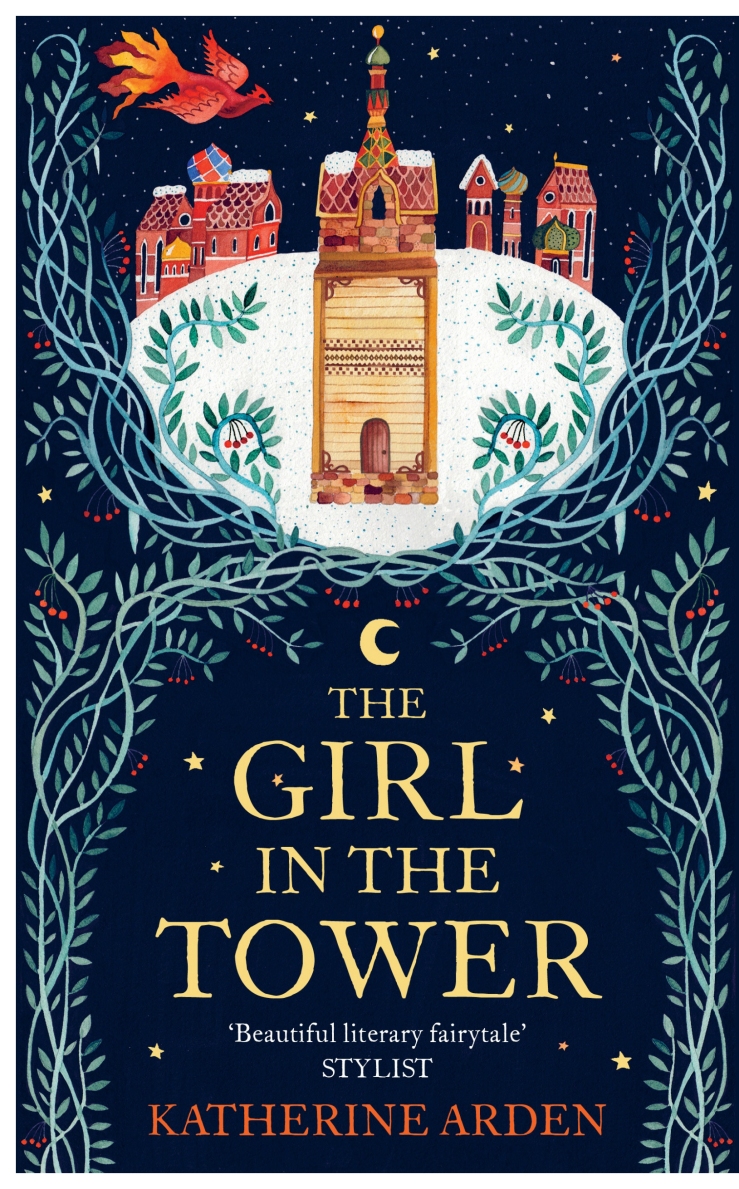

I feel terribly guilty reviewing these books two at a time. They are too good to be treated like this! They are a delicious treat and parcelling them up together simply for convenience and to save time feels wrong.
But, I’m still doing it.
These novels are two parts of a mythic fairytale set in the depths of the Russian rural village of Lesnaya Zemlya in winter in The Bear and the Nightingale and in Moscow itself in The Girl in the Tower. They have all the same delicious dark creepiness that we see encapsulated in the opening scenes of both books. Like the children, we read in a cozy warmths, huddled around the Russian oven, listening to deliciously creepy and discomforting tales of old Gods, myths, fairytales and ghost tales. For us, we experience the cosy chill; for Vasilisa Petrovna, the youngest daughter of the Boyar, and our protagonist, they become more real and terrifying.
There is a wonderful delight in the slow revelation of the mythical world around Vasya. Whilst her family are living in the mundane and (at least superficially) Christian world, there is something darker, deeper and more ancient thrilling through Vasilisa’s veins – something which we have not yet seen fully despite being on the second book in the trilogy – and she sees the creatures from the stories around her. The domovoi, a “A creature with eyes like coals hid in the oven”, guarding it and its life-giving heat; the rusalka, splashing in the rivers; the bannik in the bathhouse, the “little potbellied devil in there that grinned at them through the steam”; the vazila protecting the horses in the stables; the dvorovoi at the gateways, the polevik in the fields, the “vodianoy in the river, the twig-man in the trees”. As an outsider to Russian and Slavic folklore – beyond Baba Yaga – there was a wealth here to learn. And, although Arden had provided a glossary, her writing was so clear and organic that I never felt the need to refer to it. We discover with her that this mythology is real, is not evil as taught by the Church – albeit capable of caprice and not necessarily human in its moral compass – but generally protective. And the scenes where she feeds the creatures with bread, milk and blood to strengthen them in their weakness is wonderful. The magic here and the evocative style reminded me strongly of Erin Morgenstern’s The Night Circus or Helene Wecker’s The Golem and the Djinni.
The two big creatures we see are Morozko, the Frost King and God of Midwinter, and his brother, Medved the Bear, locked into an eternal conflict into which Vasya and her family and her village are drawn.
Vasya is an absolute delight of a character: wild and impetuous, “frog mouthed” in her youth and wild as a girl – somehow escaping the rigid patterns of what a woman’s life should have been in her world. Her otherness horrifies and terrifies some in the village; it excuses some of her own excesses; it charms the reader. She is a force of nature – in a very literal sense through the book. And the reader is incapable of not loving her and cheering her on as she slowly comes to terms with her own difference and grows to become – for want of a better word – a witch or in Russian a vyed’ma in her own right. She is, in fact, very similar to Makepeace, the protagonist of Frances Hardinge’s equally gorgeous A Skinful of Shadows.
As the power of the household spirits fades, as faith in them dwindles due to negligence and the rise of Chrsitianity, the conflict between Medved and Morozko intensifies and affects death itself: the vampiric undead upyry, rise and threaten the village. Poor poor Dunya. It is here that we see Vasya at her best: using her piecemeal knowledge and understanding to circle the village, stregthen the domovoi and defeat the upyr.
Morozko, however, is a larger character than just background: he haunts the first novel and Vasya as an ambiguous presence, felt to be threatening and alien, hovering on the edge of Vasya’s story. As she reaches womanhood, his presence grows and he intervenes more directly. And yet – thankfully – Arden never fully humanises him, although she touches on it too closely in The Girl In The Tower. There is always a disconnect between his motivations and human motivations, his understanding and human undertanding, his morality and human morality.
In The Girl in the Tower, Vasya asks
“Will you teach me to do magic, too?” she asked him. “To make fire with my eyes?”
The fire flared sudden and harsh on the bones of Morozko’s face. “There is no such thing as magic.”
“But you just—”
“Things are or they are not, Vasya,” he interrupted. “If you want something, it means you do not have it, it means that you do not believe it is there, which means it will never be there. The fire is or it is not. That which you call magic is simply not allowing the world to be other than as you will it.”
I was concerned with where Arden would take the story with The Girl In The Tower: Vasya no longer had a place in Lesnaya Zemlya by the end of The Bear and the Nightingale and yet there was nowhere else to go. Where she ended up, in fact was reuniting with her brother and sister Kolya and Olga, two characters who had been somewhat abruptly removed from Lesnaya Zemlya in The Bear and the Nightingale and appeared to have disappeared without a trace. It was in The Girl in the Tower that we see them again and see that Arden seems to have deliberately and consciously crafted and maneuvered her characters about.
The threat in The Girl in the Tower is similarly supernatural and drawn from mythology, but there are also threats from the human society: Vasya as a girl would be expected to be secluded in the terem and removed from society, a fate worse than death for such a wild and unruly heroine as Vasya. Perhaps a worse fate than any. Vasya, instead, finds a kindred spirit in her niece and indeed in the eponymous girl in the tower and grows from being a witch to part of a sisterhood, perhaps. Perhaps, a coven!
If I were to grumble a little about these books, the endings seem a little out-of-joint with the evocative and powerful build-ups. In both books the physical confrontations don’t feel perhaps as prepared for or as it could have been. And there are hints – some not to subtle – about Vasya’s true heritage and family.
But Midnight only said wearily, over the roar, almost to herself, “Her mother will be glad.”
Vasya, much later, would wish she had grasped the significance of this. But at the moment she did not. She was bruised, shocked, and exhausted; Moscow was burning down around them and it was her fault.
These are the first two books of The Winternight Trilogy and I am waiting with bated breath for the third book to come out: The Winter of the Witch on January 8th 2019.
Publisher: Del Rey
Date: January 10th 2017 (The Bear and the Nightingale) and December 5th 2107 (The Girl in the Tower)
Available: Amazon (The Bear and the Nightingale) and Amazon (The Girl in the Tower)


That’s a beautiful cover. And I love the name of your blog site.
LikeLike
Thank you!
LikeLike
[…] So excited that an ARC of The Winter of the Witch by Katherine Arden has been dispatched today! Book three of the Winternight Trilogy. […]
LikeLike
[…] then, the glorious The Winter of the Witch, the third and final part of Katherine Arden’s Winternight Trilogy arrives as an ARC. It is wonderful and sumptuous and compelling – with a couple of […]
LikeLike
[…] is the third in Arden’s Winternight Trilogy which commenced with The Bear and the Nightingale and The Girl in the Tower, both of which I loved. Here we dive back into the half forgotten […]
LikeLike
[…] of London series, and give Foxglove Summer an honourable mention. And Katherine Arden’s Winternight […]
LikeLike
[…] the wonderful Winternight Trilogy by Katherine Arden, embedded in Russian folklore and retelling (and embroidering) the story of […]
LikeLike
[…] some of the food stuffs mentioned in the books I was reading and, I think it was when reading The Bear and the Nightingale by Katherine Arden, that she mentioned I did like the sound of honey cakes. So I made a honey cake […]
LikeLike
[…] rooted in the historical, The Winternight Trilogy – especially the first book The Bear and the Nightingale, vividly depicts the privations of feudal Russia or Russ’ even in the households of the boyar […]
LikeLike
[…] The Bear and the Nightingale, Katharine Arden […]
LikeLike
[…] utterly compelling world and characters is introduced to us in The Bear and the Nightingale and is resolved wonderfully in The Winter of the […]
LikeLike
[…] Winternight trilogy, comprising The Bear and the Nightingale, The Girl in the Tower and The Winter of the Witch is a delicious exploration of a young girl, Vasya’s realisation […]
LikeLike
[…] The Bear and the Nightingale, Katherine Arden […]
LikeLike
[…] The Winter of the Witch, which brings Katherine Arden’s Winternight trilogy to a glorious end, is less quirky but more […]
LikeLike
[…] this if you enjoyed The Bear and the Nightingale or The Golem and the […]
LikeLike
[…] Winternight series, Katherine […]
LikeLike
[…] The Bear and the Nightingale, Katherine Arden […]
LikeLike
[…] – Vasilisa Petrovna – from Katherine Arden’s Winternight Trilogy, shortened to […]
LikeLike
[…] The Bear and the Nightingale, Katherine Arden […]
LikeLike
[…] Vasya Petrovna and Morozko, The Bear and the Nightingale […]
LikeLike
[…] Vasilisa and Morozko, The Bear and the Nightingale […]
LikeLike
[…] The Bear and the Nightingale, Katherine Arden […]
LikeLike
[…] original concept – Narnia springs to mind of course, but so too do Katherine Arden’s The Bear and the Nightingale or American Gods or Neverwhere by Neil Gaiman – but it is an extraordinarily powerful […]
LikeLike